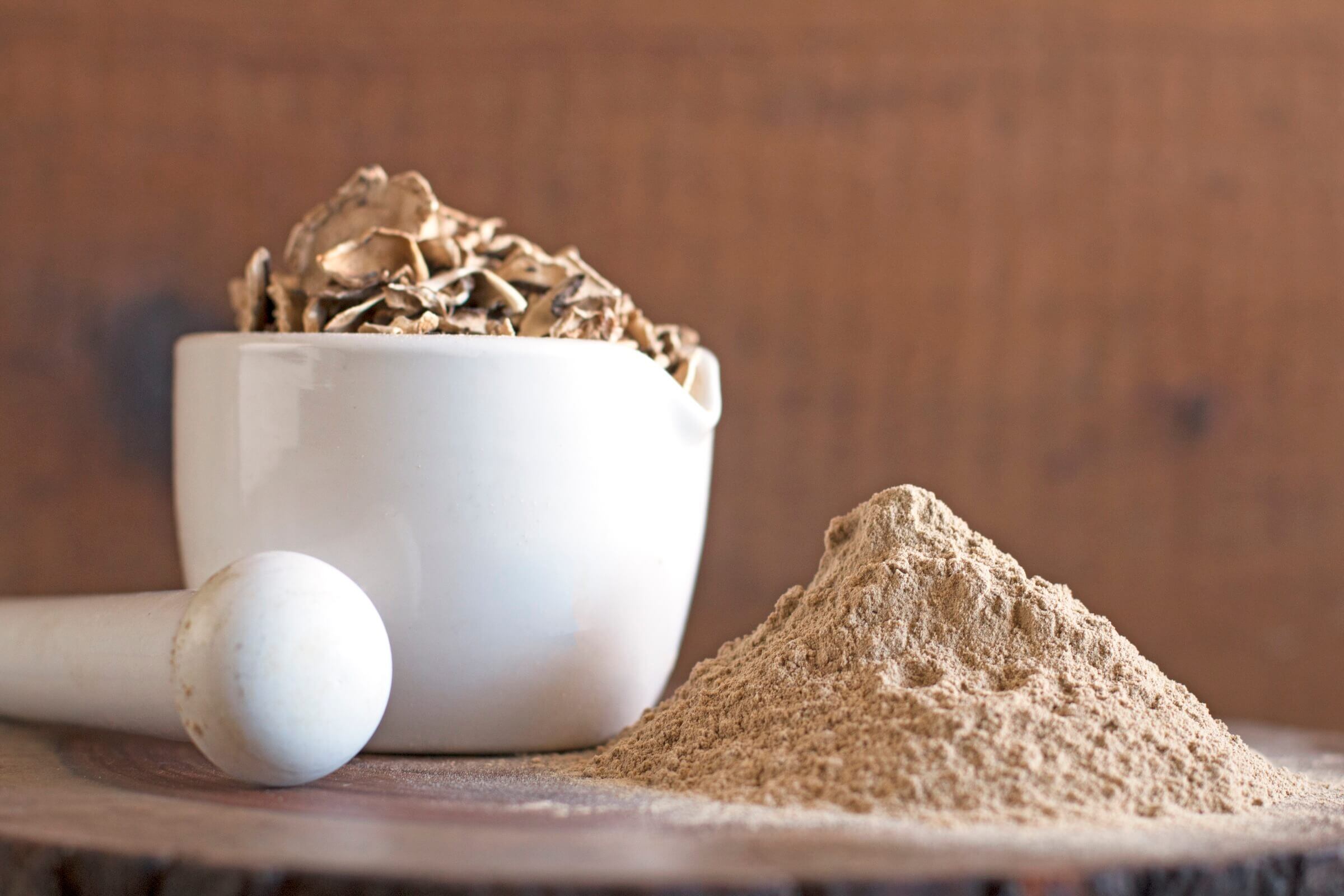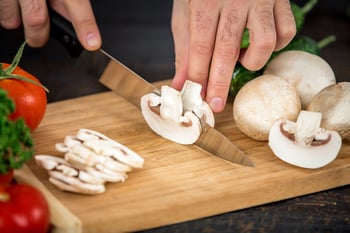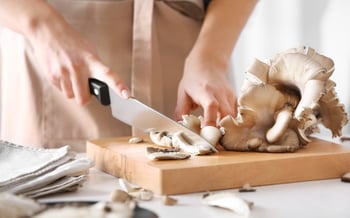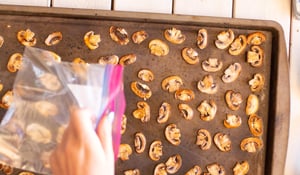While you can’t beat the texture and robust flavor of fresh mushrooms, dehydrated mushrooms are an excellent food to stock in any kitchen.
Not only do dried mushrooms have a much longer shelf life than fresh fungi, but they also maintain nutritional value— making them a convenient ingredient for cooking on the fly!
Plus, many specialty mushroom varieties can only be harvested during certain times of the year, and dehydrating them allows you to add them to your favorite meals outside of growing season.
But dehydrated mushrooms don’t work in all meals. What if there was a way to get the nutrients found in mushrooms without the distinct taste? There is! Dried mushrooms can be easily blended into mushroom powder and mixed into your meals for a kick of plant-based protein and dietary fiber, without the strong umami flavor of fresh fungi.
Check out these easy instructions for making mushrooms powder right at home:
Step 1: Use Dried Mushrooms or Dehydrated Mushrooms
Before you can turn your mushrooms into nutritious powder, your fungi must first be dried. While you can buy pre-dehydrated mushrooms at popular grocers, a lot of people enjoy drying them themselves.
It’s the perfect way to save those extra mushrooms sitting in your fridge— plus, fresh mushrooms can be cheaper when purchased in bulk.
Check out our blog all about properly dehydrating mushrooms here to discover how to clean and slice your fungi before drying, as well as recommendations on temperature and time settings on your dehydrator.
Step 2: Grind Dried Mushrooms in a Blender
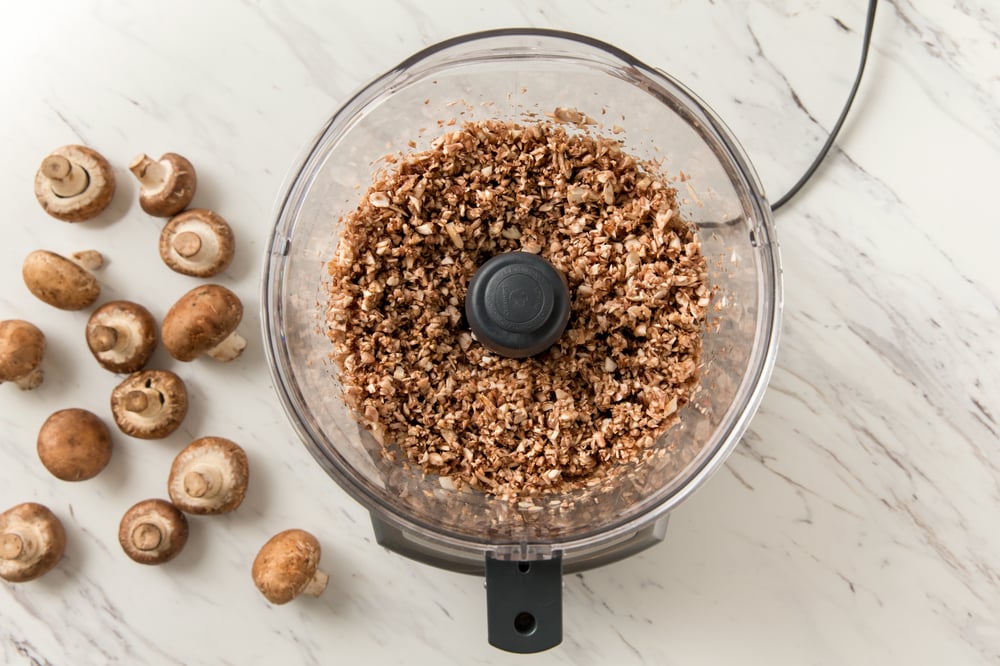
After your mushrooms are properly dried, it’s time to wipe the dust off your food processor! Place your dehydrated fungi in your processor (or a blender, if you don’t have one) and process them until they turn into a fine powder.
We recommend pulsing on and off for about 15-20 seconds to break up the big pieces, and then maintain a constant pulse for about a minute. If you are using a blender, you may need to pulse longer or spread your mushrooms with a large spoon between pulses to ensure all chunks are completely grinded.
Blending your mushrooms can cause a cloud of dust to form within your processor chamber, so we advise letting your powder settle for a few minutes before opening the lid.
Want to know more about the wonders of mushroom powder? Check out our Mushroom Powder 101 blog!
Step 3: Strain Chunks From Powdered Mushroom Mixture
Even after a thorough blend, small chunks may still remain in your mixture. That’s why we recommend using a fine mesh strainer next.*
Place a large bowl under your stainer and pour your mixture into the mesh. This way you can get any pesky chucks ready for a second round of blending.
*Note: using a traditional strainer won’t work, as you’ll lose precious mushroom powder through the holes. Choose a tight woven material like this one on Amazon.
Step 4: Regrind Mushroom Pieces in Blender or Food Processor
Regrind any loose solid pieces until they form a fine powder. Then, combine them into your large bowl with your other powder.
Ta-da! You have homemade mushroom powder.
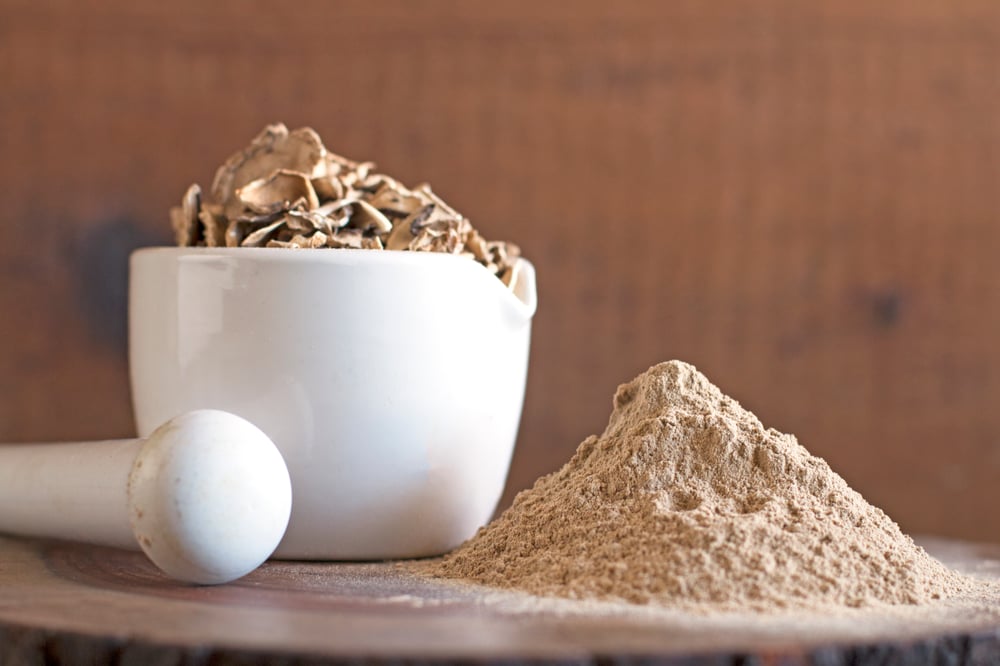
Step 5: Store Your Mushroom Powder
The best way to extend the freshness of your mushroom powder is to properly store it. While you can keep your mushroom in a plastic zipped bagged or a plastic locking container, we recommend using an airtight glass jar for maximum shelf life.
Store your jar away from direct heat and light, in a cabinet like you would your potatoes. If properly stored, dehydrated mushrooms can last much longer than fresh mushrooms; you’ll have the freshest experience using it within one months of blending.
Bonus: How to Use Mushroom Powder
Now that you have a generous serving of mushroom powder, put it to use!
Mushroom powder blends excellently into:
- Smoothies or shakes
- Soup
- Broth
- Sauces
- Gravy
- Breakfast cereal
- Yogurt
Or, check out our post featuring our favorite recipes using mushroom powder.
Keep the Mushrooms Coming!
There you have it. Now you know how to make your own mushroom powder, right at home.
While mushroom powder is a great way to get a nutritious kick, there’s no replacement for the benefits and taste of fresh mushrooms. Simply download our Mushroom Nutrition Guide to learn more!

